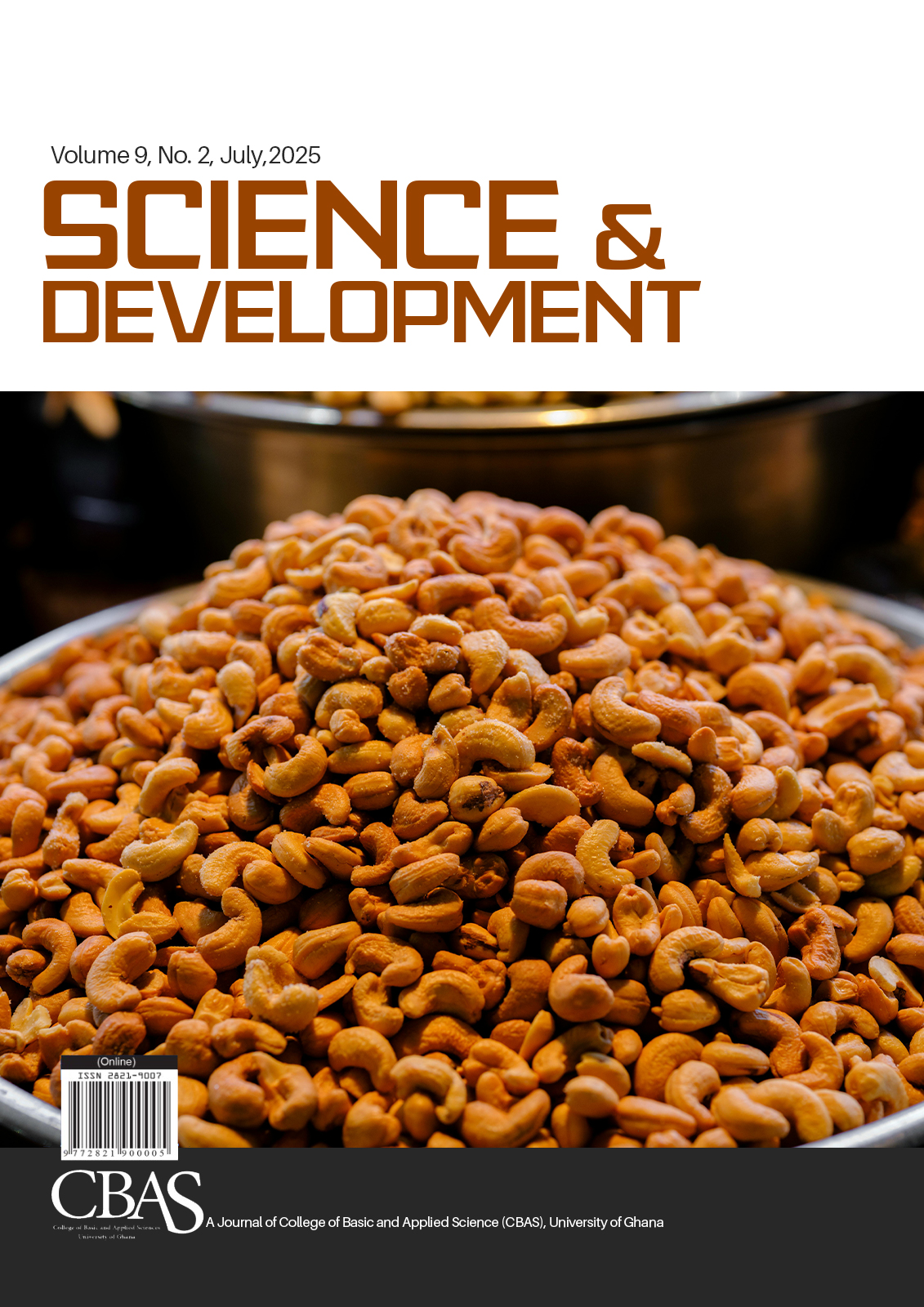Examining the potential of growing sweet potatoes in polypropylene sacks as a food security strategy in the Bolgatanga Municipality of the Upper East Region, Ghana
Abstract
To compare the growth and yield of six sweet potato varieties grown on polypropylene sacks in Dukomah Garden in Yorogo Gaabiisi, Bolgatanga Municipal, Upper East Region, Ghana. A Randomized Complete Block Design in six treatments was used. Each treatment was a variety of sweet potatoes, housed in a sack filled with soil. Each sack, placed vertically erect, was divided into three equally spaced replicate rows. Six equally spaced holes were made on each row, for planting the vines. Data was collected fortnightly, from one plant per row, on the number, area and length of leaves; petiole length, number and length of vines, number and mass of tubers. The data was analyzed using STATA 15.0. In 2021, the leaf area of the NYO variety (67.30 ± 19.36 cm2) was significantly higher than those of the APO (41.22 ± 17.83 cm2; P = 0.00), SUY (37.67 ± 34.75 cm2; P = 0.00), -39 (44.96 ± 10.85 cm2; P = 0.00) and JUN (12.33 ± 15.55 cm2; P = 0.00) varieties. In 2022, the mean leaf area was generally lower and did not vary significantly between the varieties. However, there were significant differences in leaf area between 2021 and 2022 (P = 0.00). Leaf area had a positive influence on tuber yield (r = 0.187). The NYO vines (141.22 ± 89.08 cm) were significantly longer than those of the APO (85.70 ± 62.75 cm, P = 0.01), SUY (69.22 ± 79.97 cm, P = 0.00) and JUN (15.96 ± 22.15 cm, P = 0.00) varieties in 2021. There were no significant differences in vine length between 2021 and 2022. Whereas in 2021, the NYO variety produced the highest yield of tubers (17.62 ± 2.21 t/h, P = 0.00) and biomass, the APO variety produced the higher tuber yield (11.27± 2.18 t/h), than FEV, -39 and JUN (P = 0.00) but not SUY (P = 1.00) and NYO (P = 0.61) in 2022. On the other hand, the SUY variety produced 6.19 ± 8.92 t/h, significantly higher than the -39 (2.86 ± 2.21 t/h) and JUN (0.16 ± 0.22 t/h) varieties (P = 0.00) in 2021 and (10.79± 4.78 t/h) in 2022, significantly higher than FEV (5.40± 3.00 t/h, P = 0.00), -39 (2.86 ± 1.05 t/h P = 0.00) and JUN (3.97± 0.83 t/h P = 0.00). The APO, NYO and SUY varieties produced the highest biomass and tubers and are therefore, recommended for the production of tubers for human and vines for livestock consumption.



